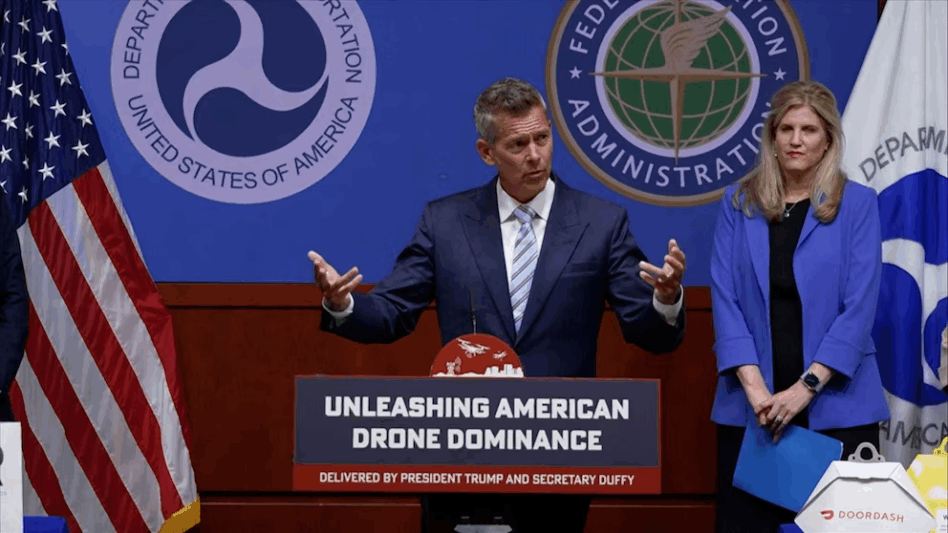We need an updated zodiac for the US, because it’s clearly the Year of the Drone.
On Tuesday, Transportation Secretary Sean Duffy proposed some big changes to the FAA rules around domestic UAV flights—especially out-of-sight ones. The long-awaited Notice of Proposed Rulemaking (NPRM) authorizes Beyond Visual Line of Sight (BVLOS) flights, where the operator cannot physically see the drone. While this isn’t defense-specific, we can imagine there is some celebrating in droneworld today.
Them’s the rules: For context, under current FAA rules, a drone’s pilot, a visual observer, and the person manipulating the flight controls must all be able to see the drone throughout the flight to assess location, altitude, hazards, and risks to life and property. That’s a huge pain in the ass for longer-range missions or flights in adverse conditions—if a drone can’t go beyond eyeshot, it kinda defeats the point.
To get around this, operators have had to request exemptions on a case-by-case basis—which, if you know the government, is neither fast nor fun.
BVLOS and beyond: So, needless to say, Duffy’s announcement was a welcome one for drone producers and users. Here’s what’s included in the proposed rule change:
- Enables routine BVLOS ops for package delivery, aerial surveying, public safety, and flight testing at or below 400 ft above ground level from access-controlled areas.
- Introduces Automated Data Service Providers (ADSPs) to manage airspace deconfliction. Drones have to use this software to detect and avoid other aircraft.
- Requires FAA approval for areas where operators intend to fly, namely the boundaries, the number of daily flights, and takeoff and landing spots.
- Allows drones up to 1,320 lbs to operate under industry consensus airworthiness standards, skipping traditional FAA certs and creating a streamlined approval process.
“We are making the future of our aviation a reality and unleashing American drone dominance,” Duffy said in a statement. “Our new rule will reform outdated regulations that were holding innovators back while also enhancing safety in our skies.”
Michael Kratsios, Director of the White House Office of Science and Technology Policy, added that the NPRM “helps unlock the full potential of BVLOS drone operations” and transforms “how we monitor infrastructure, deliver critical supplies, advance precision agriculture, and speed up emergency response.”
The rule also opens the door to the FAA allowing operators to fly multiple drones on a case-by-case basis, which was previously not permitted. If finalized, the rule would be yet another mark in the victory column for startups that make little flying things.

